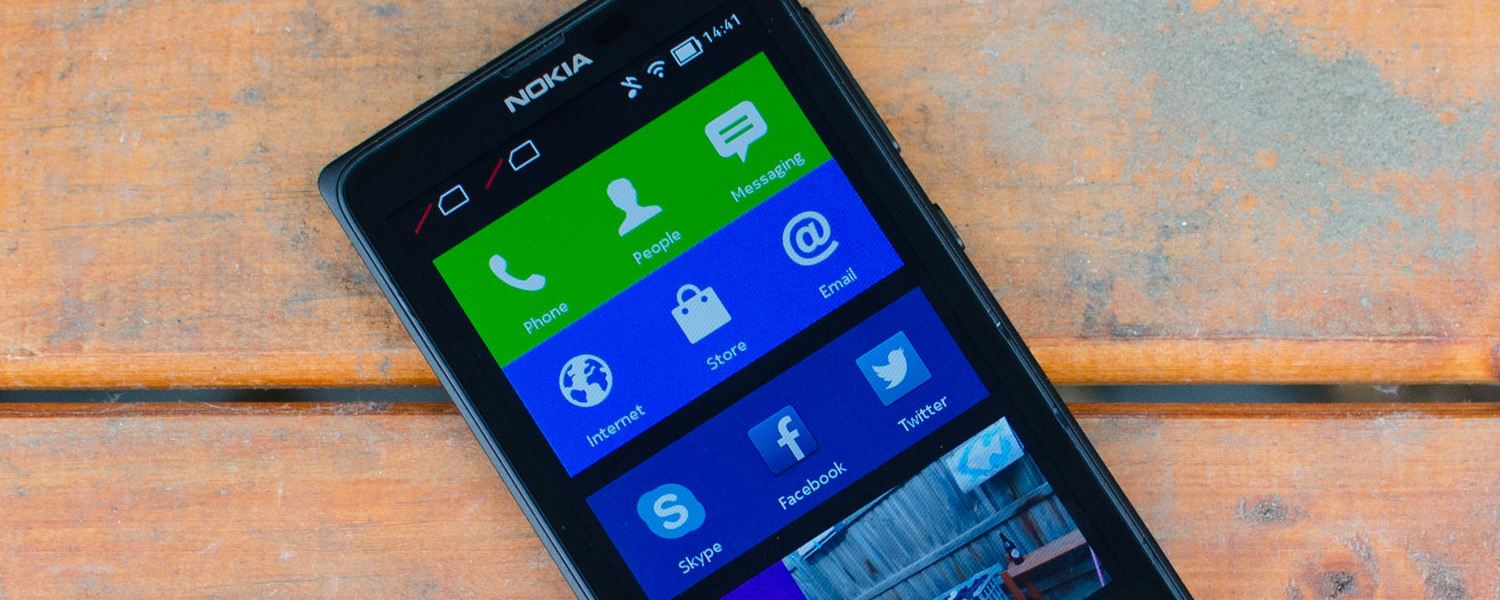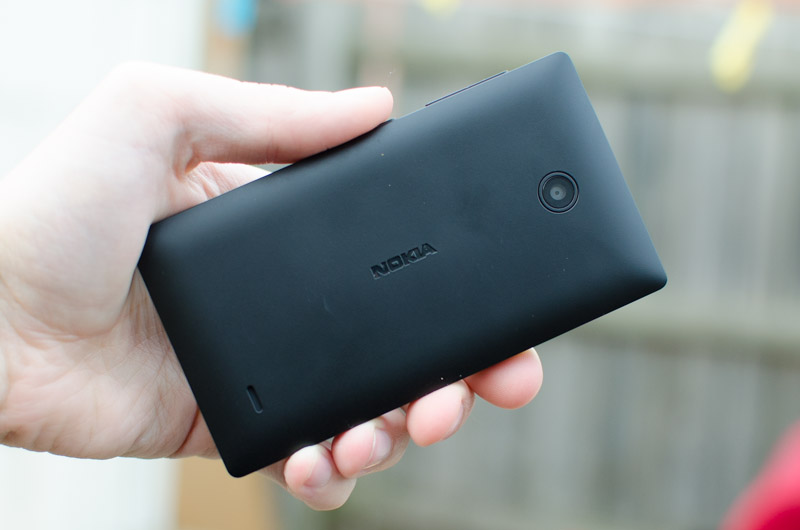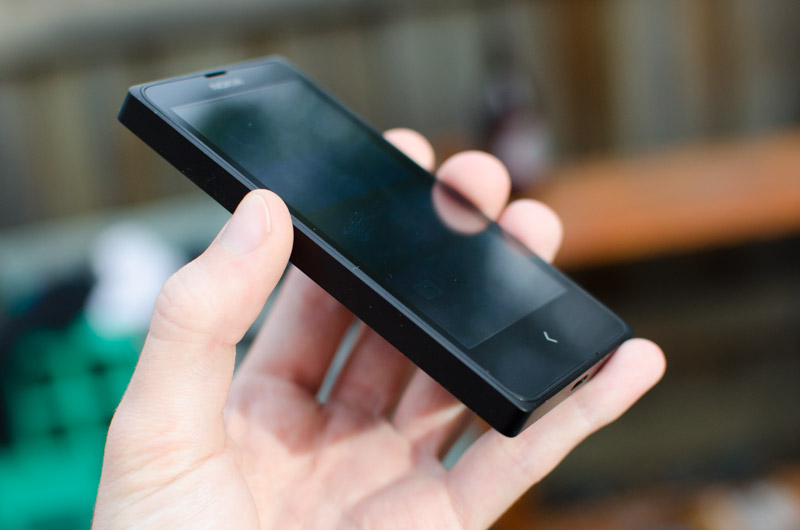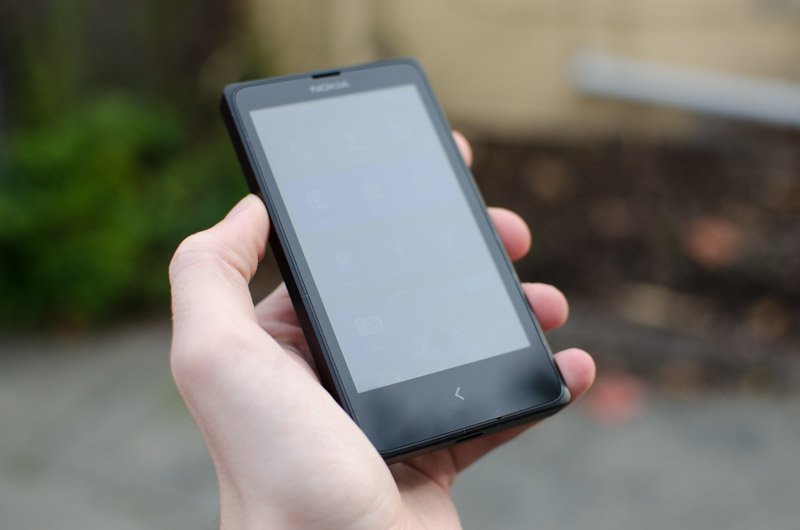When I returned from Computex a few weeks ago, I picked up the box of the next review unit in the waiting line. It was the Nokia X, the company's first Android phone meant to slot in between the low-end Asha feature phones and Lumia smartphones. Despite reading a few pieces on the Nokia X beforehand, nothing really prepared me for the first time I used it.
First up, I did what I always do: I opened the box, removed the plastic protective material, took off the back cover, and swapped in my microSD and SIM cards from the Galaxy S5 I was using previously. I was in luck, too, as there was enough charge in the device that I could power it up and start using it straight away.
After the handset powered up for the first time, I was confounded.
Nokia X - $130 unlocked
- 4.0", 800 x 480 IPS LCD display (233 ppi)
- Qualcomm Snapdragon S4 Play SoC
- 1.0 GHz dual-core CPU, Adreno 203 GPU, 512MB RAM
- 4 GB internal storage, microSD card slot
- 3.15 MP camera, 1/5" sensor, f/2.8 lens, 480p video
- 1,500 mAh, 5.55 Wh battery
- Dual-SIM, HSPA, Wi-Fi b/g/n, Bluetooth 3.0
- Forked Android 4.1
- 129 grams, 10.6mm thick
Surely a handset released in 2014, even if it belongs to the lower end of the product tree, couldn't be performing this poorly. Surely Nokia had actually spent time ensuring the device was properly optimized. Surely they didn't release a product that felt so unfinished.
Once I finished the setup process I was dumped into Nokia's custom homescreen layout, again fighting my way through lag to check out some apps and find the settings screen. It was time to get my contacts sorted through the usual method of syncing my Google account, but oh wait, there's no Google integration! Nokia overlooked this critical Android feature!
... and this was just the beginning of my time with the Nokia X.
The Nokia X unit used in this review was kindly provided by MobiCity. If, for some reason, you really want this phone, they will ship one to you anywhere in the world. If not, you might want to check out the much better (and affordable) Lumia 520
Design
One of the few areas where the Nokia X isn't truly awful is design. There's nothing overly inspiring about what Nokia has put together here, but it does get the job done in a way that's reasonably ergonomic and visually decent.
Click on any photo to enlarge
The materials used on the X's body have been borrowed from Nokia's other smartphones. Except for the display, which is covered and surrounded by glass, the body uses a matte polycarbonate that's somewhat soft to touch, but still feels solid and dependable. The polycarbonate shell wraps around the sides of the device in what could be described as a unibody, although the entire back portion can be removed to reveal several slots and the removable battery. The power button is in a comfortable location and has a decent clicky feel.
Like many low-range handsets, the Nokia X is dual-SIM ready, allowing you to use as both a personal and business phone with ease. Strangely, only one SIM slot is capable of using 3G networks, with the second only being able to access the very slow and outdated 2G infrastructure.
The Nokia X sports a small footprint, thanks to its 4-inch display, but it's undeniably thick at 10.6mm. Typically designers will try and hide thickness through clever curves, but this didn't happen with the X, resulting in a phone that's undeniably blocky.
Around the device you'll find typical features, such as the 3.5mm headphone jack on the top, a microUSB port on the bottom, a thin speaker above the display, and a small rear speaker in the bottom right corner. Nokia branding is minimal, but you'll still find it on the front and back.
In what's a first for Android devices, the Nokia X comes with just one capacitive navigation button, which has a back arrow printed on it. This is very unnatural (and annoying to use) as its acts primarily as a back button, but is also used for accessing the homescreen through a long press. Navigation becomes fiddly when there's a single button, and you lose the ability to quickly search or switch apps.
Evidently the choice to include just one button provides no advantage over a multiple-button setup, even with Nokia's custom software; in fact having multiple buttons would give a much better experience. Alas, this isn't the only poorly thought out aspect of the smartphone.
Display
The Nokia X's display is a 4.0-inch IPS TFT LCD with a resolution of 800 x 480 (WVGA, 233 PPI). If I had to take a guess, I'd say this display is identical to the one found in Nokia's budget Windows Phones, the Lumia 520 and Lumia 525.
Despite making use of IPS technology, this isn't in the same league as the IPS panels found in high-end smartphones such as the HTC One M8. Color quality and saturation is pretty decent for a low-end handset, but there's noticeable backlight bleed when displaying blacks and dark colors that reduces contrast.
The resolution of the panel is acceptable - at a price point approaching $100 I don't expect Retina-like quality - although there are upgrades to be had. The Moto E, for example, is in the same price bracket as the Nokia X but comes with a 960 x 540 display, which provides that extra level of clarity. Images and text on the X's WVGA display look fine, but it's not going to blow you away by any means.
One of the main issues I have with the Nokia X's display is the amount of layers between the outer glass and the display module. Having these layers increases reflectivity, making it hard to view the display when there's strong backlighting, even when it's operating at maximum brightness. Viewing angles aren't great either, especially at low brightness levels.
Unlike the Lumia 520, there's no option to change the color tone or saturation of the display, and there's no option to increase touchscreen sensitivity, meaning you can't use the panel with gloves on. However, you can double tap the screen to wake the device, and there's a "glance screen" feature that displays the time when the screen is 'off'.
Interestingly the capacitive touchscreen is only capable of registering two fingers at once, while most other smartphones of this era are capable of registering at least five. This doesn't impact everyday use for actions such as pinch-to-zoom and scrolling, but it could become an issue if you're playing games that have complex controls.
Sometimes the touchscreen appears to be briefly unresponsive, although I'm not sure if it's related to the touchscreen itself, or the mediocre performance which I'll discuss on the next page. Either way, the Nokia X doesn't always respond as expected.









